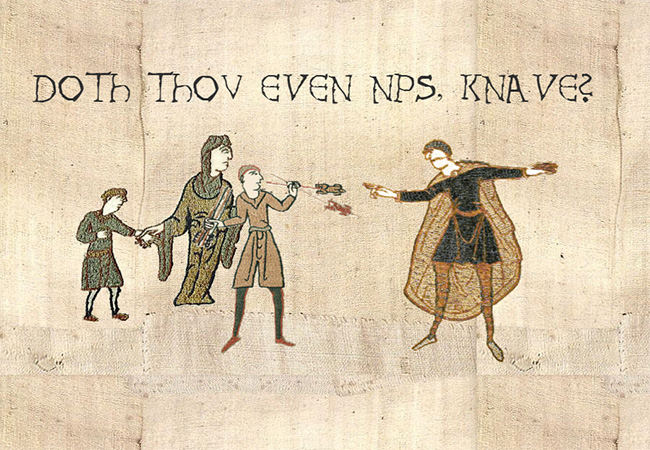To research or not research, that is the question
Betty has a product
4 min read
 Sarah Lubbe
:
09 December 2020
Sarah Lubbe
:
09 December 2020

For many, creating customer experience is not as simple as delivering great service to the end customer making a purchase. Today's interconnected and interdependent business world means that many organisations operate within complex value chains, and often these value chains include intermediaries (such as brokers, dealers, agents, etc.) through which the organisation expands market reach. The result is that the organisation who owns the brand, product and/or service is removed from the end customer and needs to rely heavily on the intermediary to deliver customer experience.
Since the benefits of customer experience (increased spend, decreased churn, higher customer lifetime value, etc.) still accrue to the organisation through their intermediary network, the challenge then becomes that of managing and improving customer experience at arm's length – and the greatest hurdle (and opportunity) in this type of customer relationship is that of creating intermediary satisfaction.
How does Intermediary Experience differ from Customer Experience?
On face value, creating intermediary satisfaction and creating customer satisfaction are not wholly different. At the end of the day for organisations operating within complex value chains, the intermediary is for all intents and purposes a customer segment. The difference, however, lies in the value drivers (or moments of truth) within the intermediary relationship, and in the understanding that these types of relationships bear the complexity of B2B customer experience with the added requirement of enabling end customer experience with, and through, the intermediary relationship.
At Smoke CI, we model intermediary experience (IX) on three basic tenants that underpin the difference between IX and traditional customer experience (CX), as well as create a sound framework for improving satisfaction within complex value chains. The 3 pillars of our IX model are Recognise, Satisfy and Retain.
Recognising the Intermediary
In much the same way as end customers want to feel like an organisation understands them, the starting point of a satisfactory intermediary relationship lies within the ability of the organisation to understand the needs and requirements of the intermediary. These differ from customer requirements in that an intermediary is a business partner, not only a buyer, and as such, requires far more knowledge and resources from the organisation than a once-off customer. Take, for example, the process of onboarding. Intermediary onboarding includes processes such as contractual negotiation, training, orientation and product knowledge. While with end customers, onboarding can be a fairly quick process, with intermediaries, there is a much longer time commitment required, more individuals involved and more complexity to manage.
Top tip – A Voice of the Intermediary survey post onboarding should be customised to different stakeholders to understand the experience offered to all parties. Ease of process is probably the most important factor during onboarding, but this means different things to different people. For example, the financial and contractual onboarding experience may be wholly different from the day-to-day user experience and, as such, needs to be understood holistically to improve IX overall.
Satisfying the Intermediary
Within B2B relationships, satisfaction is a complex issue. Factors ranging from perceptions of individual interactions through to a sense of empowerment and connection to the brand impacts the intermediary's overall satisfaction. A key hygiene factor in IX, however, remains the creation of value for intermediaries. Value within intermediary relationships centre around three key drivers; namely market momentum, relationship and partner economics. Market momentum refers to the ability of the organisation to create high demand for their products and services in a way that enables intermediaries to share in its success. Relationship within IX is about aligning intermediaries to a shared vision of success within the value chain, and ensuring that they feel empowered and engaged around a common goal. Partner economics is the financial return the intermediary gains from the relationship. These factors all work together to create a sense of satisfaction for the intermediary, that then translates into end customer satisfaction.
Top Tip – While financial metrics can be measured quite easily, the perception of relationship requires intermediary feedback. When crafting intermediary satisfaction surveys, it is important to uncover relational drivers such as alignment to organisational value, goals and perception of leadership. These should further be matched with more transactional metrics such as satisfaction with interactions between intermediary, the organisation and its employees to understand the state of intermediary satisfaction better.
Retaining the Intermediary
Within intermediary value chains, there can often be a sense that the relationship is certain since the intermediary has no option but to remain a partner of the organisation. This arises from the perceived barriers to change innate to this type of B2B relationship. A dealership may seem forever linked to an automotive brand, a broker deeply tied to an insurance house, and as such, little emphasis can be placed on retaining an intermediary within a partner network. This is a false sense of security. In today's world, businesses can pivot rapidly, utilising existing infrastructure and resources to change offerings completely, or align with a different partner organisation to augment their own offerings with different products. There is no guaranteed security within an intermediary relationship, and thus, deliberate retention effort is required. Within any customer relationship, be it B2C or B2B, a sense of being valued is key to retaining the relationship for the long term, and key to this is the feeling of being heard. Intermediaries are often the face of the organisation and as such have first hand, invaluable knowledge that needs to be gathered and understood for the organisation to remain competitive.
Top Tip – Feedback gathered from intermediaries on market conditions, end customer expectations and process efficiencies should be used to drive innovation within the organisation. This creates a double benefit, in that the organisation remains competitive and the intermediary gains a sense of co-creation through being heard.
How to gather Intermediary feedback
Successful intermediary feedback strategies hinge off of the combination of both transactional and relational feedback (howeve, relational is key). For large intermediary networks, with high transaction volumes, transactional feedback acts as real-time insight into the processes, communication and employee performance on a grass-roots level. This type of feedback is invaluable as it enables improvement on an operational level. Relational feedback, on the other hand, is about the strength of the relationship, the alignment between intermediary and organisation, and the creation of value. Whether the organisation partners with a handful of high-value partners or a network of thousands of intermediaries, regular relational studies provide insight into the state of satisfaction within the value chain, and is a key indicator of end customer satisfaction, and indeed revenue generation.
To find out more about managing intermediary satisfaction, talk to us today.
 Read More
Read More

As part of our 11-part trend series, we take a deeper look at AI-powered CX and explore how businesses can implement this trend to enhance their...

Digital transformation isn’t a buzzword anymore it’s an imperative. Ask yourself: Is your Customer Experience (CX) program keeping pace? As a CX...